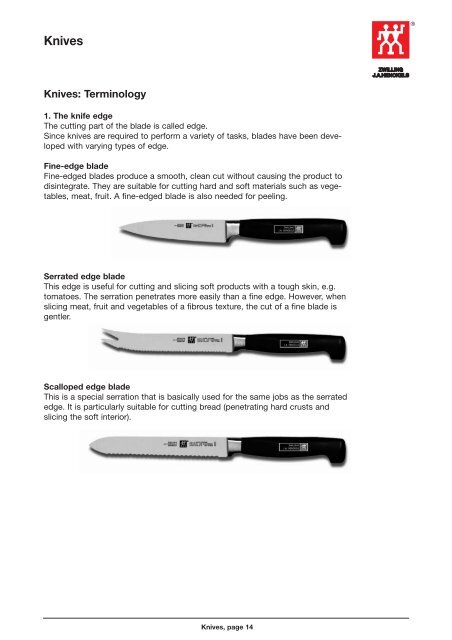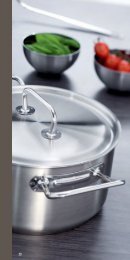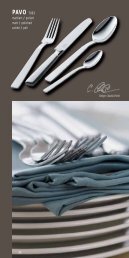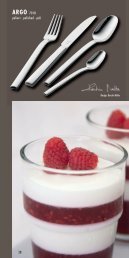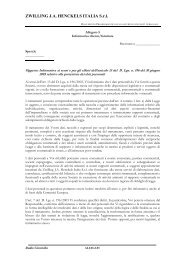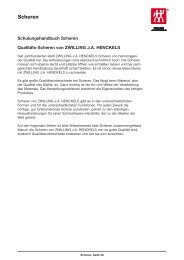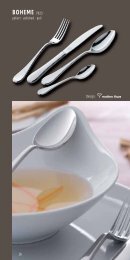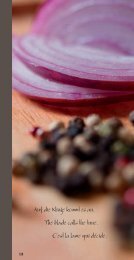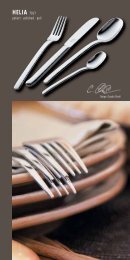Download this chapter as PDF - Home - ZWILLING JA HENCKELS ...
Download this chapter as PDF - Home - ZWILLING JA HENCKELS ...
Download this chapter as PDF - Home - ZWILLING JA HENCKELS ...
You also want an ePaper? Increase the reach of your titles
YUMPU automatically turns print PDFs into web optimized ePapers that Google loves.
Knives®Knives: Terminology1. The knife edgeThe cutting part of the blade is called edge.Since knives are required to perform a variety of t<strong>as</strong>ks, blades have been developedwith varying types of edge.Fine-edge bladeFine-edged blades produce a smooth, clean cut without causing the product todisintegrate. They are suitable for cutting hard and soft materials such <strong>as</strong> vegetables,meat, fruit. A fine-edged blade is also needed for peeling.Serrated edge bladeThis edge is useful for cutting and slicing soft products with a tough skin, e.g.tomatoes. The serration penetrates more e<strong>as</strong>ily than a fine edge. However, whenslicing meat, fruit and vegetables of a fibrous texture, the cut of a fine blade isgentler.Scalloped edge bladeThis is a special serration that is b<strong>as</strong>ically used for the same jobs <strong>as</strong> the serratededge. It is particularly suitable for cutting bread (penetrating hard crusts andslicing the soft interior).Knives, page 14


